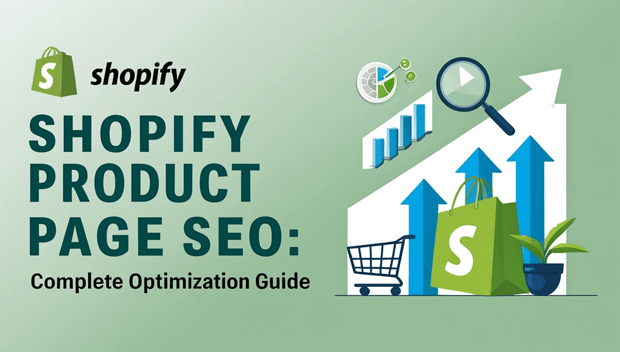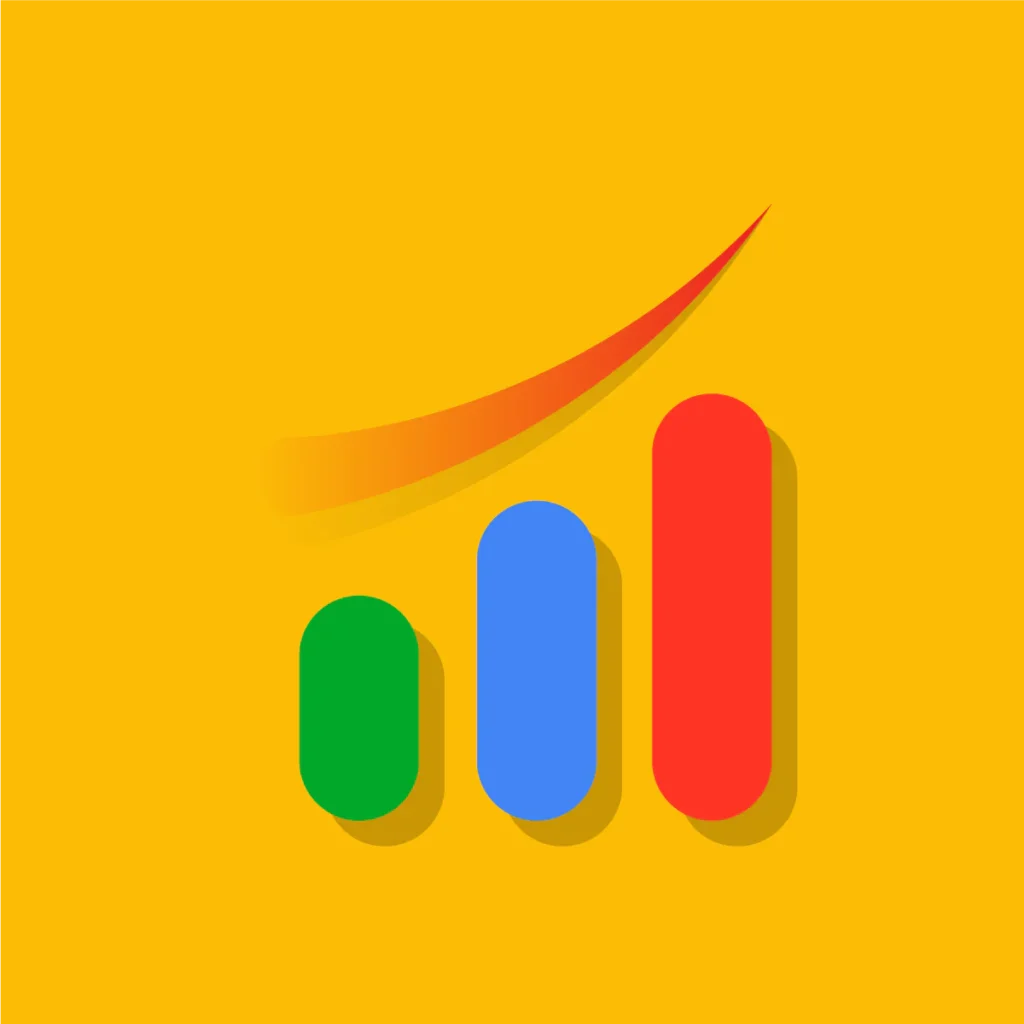Did you know that over 65% of Shopify store traffic comes from organic search in 2025?
Yet, 42% of stores still miss basic SEO essentials, keeping them buried in Google’s results.
This comprehensive guide teaches you how to master Shopify product page SEO to dominate search results, boost conversions, and build lasting authority.
Key Takeaways:
By the end of this guide, you’ll know how to:
- Craft keyword-rich URLs, meta titles, and descriptions that attract clicks and improve rankings.
- Write unique, conversion-focused product descriptions optimized for search intent.
- Implement technical SEO best practices, including fast load times, Core Web Vitals compliance, and structured data for rich snippets.
- Build topical authority with long-tail keywords, semantic SEO, and strategic internal linking.
- Future-proof your Shopify product page SEO strategy with AI-powered tools, visual search optimization, and regular audits to stay ahead of algorithm updates.
Why Shopify Product Page SEO Matters
- Organic search drives 2/3 of Shopify traffic, a sustainable source of growth.
- Pages with optimized SEO elements see up to 25% higher click-through rates.
- Google’s latest updates (Core Web Vitals, BERT, MUM) demand high-quality, intent-matching content.
Recommended Blogs for You:
👉 10 Best Shopify SEO Apps Compared 2025
👉 Complete Guide to Shopify Abandoned Cart Recovery
👉 Shopify SEO Strategy: Complete Guide to Ranking Higher
👉 5 Best Free Shipping Bar Apps for Shopify in 2025
Step-by-Step Guide to Shopify Product Page SEO

1.The Foundation for Rankings
Craft Keyword-Rich, Descriptive URLs
Use concise, keyword-focused URLs like:
https://yourstore.com/products/organic-cotton-tote-bag
🚫 Avoid generic URLs like product-123.
Pro Tip: Integrate your primary keyword naturally in the URL for better relevance signals.
Write Compelling Title Tags and Meta Descriptions
Title Tag Formula:
- Primary Keyword + Brand Name + Value Proposition
- Organic Cotton Tote Bags | Eco-Friendly & Durable – GreenStore
Meta Description Best Practice:
- Keep under 160 characters.
- Embed secondary keywords naturally.
- Include a strong call-to-action.
Example: Shop lightweight, eco-friendly tote bags made from 100% organic cotton. Free shipping & 30-day returns.
Statistic: Optimized meta tags can boost CTR by 25%.
Optimize Product Descriptions for Humans and Search Engines
- Replace generic manufacturer text with unique, benefit-driven content.
- Highlight your product’s USPs and emotional appeal.
- Include semantic keywords (e.g., “eco-conscious shopper”, “reusable grocery bag”) to match search intent.
Example: “Our organic cotton tote bags are perfect for sustainability enthusiasts who value both style and ethics. These bags are biodegradable, machine-washable, and ethically sourced.”
2. Elevate Image SEO with Descriptive Alt Text
Add keyword-rich alt text describing images to improve accessibility and boost rankings in image search. Instead of img_1234.jpg, use alt=”woman carrying organic cotton tote bag outdoors”
Statistic: Descriptive alt text can increase image-based organic traffic by 30%.
3. Prioritize Technical SEO: Speed, Structure & Schema
Optimize Page Speed for Core Web Vitals
Google’s Core Web Vitals affect rankings directly:
- Largest Contentful Paint (LCP): < 2.5 seconds
- First Input Delay (FID): < 100 ms
- Cumulative Layout Shift (CLS): minimal shift
Action Steps:
- Compress images with Shopify apps like TinyIMG.
- Avoid large, unoptimized hero images.
- Specify image dimensions to reduce layout shifts.
Statistic: Sites with CWV scores above 90 see 20% lower bounce rates.
Implement Schema Markup for Rich Snippets
Add structured data to help Google understand and enhance your listings:
Product Schema: Show pricing, availability, and reviews.
Breadcrumb Schema: Improve navigation.
FAQ Schema: Qualify for featured snippet opportunities.
Use JSON-LD format and validate with Google’s Rich Results Test.
Pro Tip: Use the GP JSON-LD Schema app to easily implement structured data on your store’s product pages.
4. Build Topical Authority with Semantic SEO
Target Long-Tail & Related Keywords
Ranking for generic terms like “Shopify SEO” isn’t enough. Expand your strategy with:
- LSI keywords: “product page optimization”, “ecommerce SEO strategies”
- Entity clusters: “alt text best practices”, “structured data for Shopify”
Tools like Ahrefs, SEMrush, or AnswerThePublic can help find these opportunities.
Leverage Internal Linking
Guide visitors (and Google’s crawlers) to related content.
Example: “Pair your organic tote bag with our reusable stainless steel straws for a complete zero-waste lifestyle.”
Statistic: Effective internal linking reduces bounce rates and distributes authority.
5. Analyze & Outrank Competitors
Perform Competitor Audits
Use SEMrush or Ahrefs to:
- Analyze competitors’ top-performing backlinks.
- Identify keyword gaps and content clusters.
Tactics:
- Guest blogging: Pitch to sites linking to competitors.
- Broken link building: Replace broken links with your relevant content.
Statistic: 60% of top-ranking pages have backlinks from 100+ referring domains.
6. Avoid Common Shopify SEO Mistakes
Duplicate product descriptions → Rewrite or use canonical tags.
Missing canonical tags → Implement to avoid duplicate content penalties.
Ignoring mobile usability → Optimize for mobile-first indexing.
Statistic: 68% of Shopify stores lose organic traffic due to technical oversights like broken links or thin content.
7. Future-Proof SEO: AI & Voice Search
Use AI-Powered Tools
Platforms like SEO.ai, SurferSEO, or Jasper can:
- Generate optimized product descriptions.
- Predict trending keywords (e.g., “sustainable fashion SEO”).
Optimize for Voice Search
Voice queries are conversational. Include long-tail phrases like:
- “Where can I buy organic cotton tote bags?”
- “Best eco-friendly shopping bags near me.”
8. Harness User-Generated Content (UGC)
- Encourage reviews and ratings with apps like Loox or Judge.me.
- Repurpose customer photos or videos on product pages for social proof.
Statistic: Products with 50+ reviews convert 18% better than those with fewer.
9. Maximize Local SEO (If Applicable)
Use keywords like:
- organic tote bags near me
- eco-friendly shops in [City]
Claim your Google Business Profile and add:
- Store hours
- Address (NAP consistency)
- Photos of your products/store
10. Drive Authority with Content Marketing
Create product-centric blogs linking to your product pages:
- 10 Creative Ways to Use an Organic Tote Bag
- Sustainable Fashion vs. Fast Fashion: What You Need to Know
Embed videos demonstrating product use.
Statistic: Video increases dwell time, a key Google ranking factor.
11. Optimize for Visual Search
With Google Lens and Pinterest driving 20% of organic traffic in fashion:
- Use descriptive file names (e.g., organic-tote-bag-natural.jpg).
- Add schema for image licenses and usage rights.
12. Monitor, Iterate & Stay Ahead
- Use Google Analytics 4 to track organic traffic, conversions, and bounce rates.
- Conduct quarterly SEO audits with tools like Screaming Frog.
Statistic: Stores updating SEO quarterly grow 3x faster than those with annual updates.
Frequently Asked Questions
How long does it take to see results from Shopify product SEO?
Most stores start seeing improvements in search rankings and traffic within 3–6 months after optimization. However, reaching peak results can take 6–12 months depending on competition and consistency.
Should I use the same keywords on all my product pages?
No. Each product page should target unique keywords that match that product’s specific features and buyer intent. Using identical keywords across multiple pages can cause keyword cannibalization and hurt rankings.
How can I avoid duplicate content issues on Shopify?
To prevent duplicate content penalties, use canonical tags on similar products or write original, detailed descriptions highlighting each product’s unique benefits.
Does adding videos to my product pages help with SEO?
Yes! Embedding videos can increase dwell time and engagement, which are positive ranking signals for Google. Videos also create opportunities to rank in Google’s video search results.
What are the most important technical SEO factors for Shopify product pages?
Key technical factors include:
1. Fast page load speeds (Core Web Vitals-compliant)
2. Mobile-friendly design
3. Proper schema markup for rich snippets
4. Optimized URLs and internal linking
5. Secure HTTPS protocol
Final Thoughts: Scale Your Shopify SEO
Shopify product SEO isn’t a one-time task. By combining technical excellence, semantic-rich content, and smart competitor analysis, you’ll stay ahead of algorithm changes and keep your store growing sustainably.



